| The
origin of Spanish ATMs (1) |
Many philatelists will already know
what the variable value stamps or ATMs of Spain and Andorra
(Spanish post) are, but maybe not many will know the origins of
the self adhesive labels used to produce them.
Here begins a series of articles
about this subject.
Every year
or two the Spanish Post (Correos) announces a public
tender for the supply of rolls of thermal sticky labels that
will be used in the franking machines.
The most recent were announced in
September
2001 (516.000 rolls), December 2002 (500.000 rolls expected
for 2003) and the last one in February 2004 (800.000 rolls
expected for 2004 and 2005). This is a subject already dealt
with elsewhere on this Web site.
The technical characteristics
of the sticky thermal labels are clearly stated in the public
tender invitation, along with the security and quality controls and
other requirements. The tender also establishes in detail the conditions
in which the rolls are to be supplied to Correos. |
|
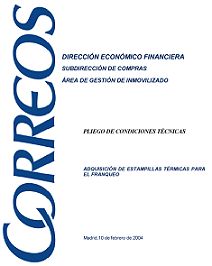 |
|
|
|
The rolls of labels arrive at
the central depot of Correos in Madrid in packing
boxes. From there they will be despatched to the different district
depots, from where they will be distributed to local offices, on demand.
Unfortunately, stock rotation of
the various types of rolls does not appear to be considered important,
with the result that distribution of the blank ATM stamp rolls is
something of a 'hit and miss' affair, with possibly only 6 or 7 of the
20 or so different models being sent out per year. This can result in the
branches of Correos having the same model until stocks are
used up. And once more, that poor control of the distribution of rolls
of blank ATMs explains the erratic distribution to local offices of
Correos.
Until now we saw 3 different types
of packing boxes, corresponding to the 3 companies that have manufactured
the most of the labels to date: Ovelar, S.A.,
Real Casa de
la Moneda - F.N.M.T. and Signe, S.A.
The OVELAR boxes are of brown
colour and they do not have any type of outer symbol. It's a company subcontracted
by the F.N.M.T., and they manufactured many of the models until
the 2002.
 |
The boxes
with rolls made by the Real Casa de la Moneda - F.N.M.T.
are a white colour and clearly identified. The size is 46.50 x 24.50 x
21.00 cm.
Each box contains 32 rolls
of 1900 labels. On each of the 4 sides there is a blank label
showing
the design. |
|
|
| On one
of the sides there is also a sticker with the design showing (Ford
T of 2001 in the example shown), the number of
the rolls in the box, the general conditions of storage and the date of
manufacture (February 2001). |
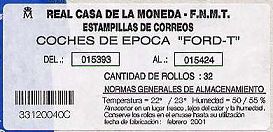 |
|
|
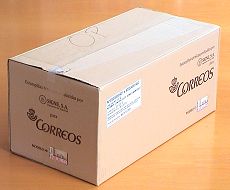 |
On
the other hand, the boxes with rolls made by Signe, S.A. are brown
in colour and the size is 46.00 x 23.80 x 21.00 cm.
Each box also contains 32 rolls
of 1900 labels and there is a label on each side to facilitate the
identification of the model. |
| In this
case, the labels include the word NULO (NULL) in red. |
 |
|
|
|
| On one
of the sides there is a sticky card with the numbers of the rolls in the
box, the general conditions for storage and the date of manufacture. |
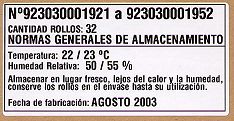 |
|
|
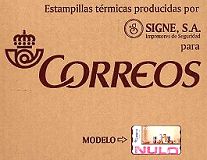 |
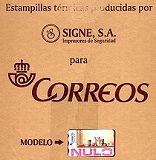 |
Details
of the sides of the boxes with the sample null label (in
this case, model T91 (99) - Pharmacy's still-life). |
|
|
|
(Continue ...)
The origin of Spanish
ATMs |
1st.
part | 2nd. part |
3rd.
part | 4th. part - Table
ATM
Web - Spain and Latin American Postal Services: http://www.ateeme.net
©
J. Jove - M. Sans.
ATEEME. Variable value stamps study group.
All rights reserved
This
page was created : 30.03.04. Last updated : 18.05.04.
English edition rewrited by S. Goodman (18.05.04)
|







